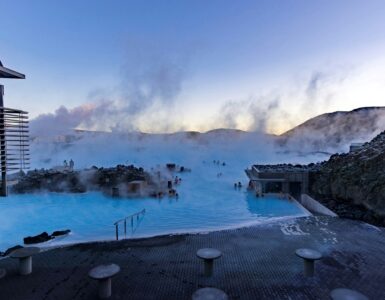One of the Seven Natural Wonders of the World, this immense chasm in northern Arizona is a mile deep and up to 18 miles across.
More than 5.5 million people go to Grand Canyon National Park every year. Most of them gaze in wonder from lookout points along the rims, while more adventurous visitors descend into the abyss. Additional wonders await at the bottom, along the Colorado River.
Here are some of the things you need to know for vacationing at the Grand Canyon.
Planning Your Grand Canyon Vacation
Due to the site’s popularity, reservations are required (or at least strongly recommended) for hotel rooms, campsites, and certain activities. Park officials advise booking “well in advance, especially during the summer months.”
The most iconic lodging is at the Bright Angel Lodge and El Tovar Hotel on the South Rim, and the Grand Canyon Lodge on the North Rim. All three of the facilities are National Historic Landmarks. More modern accommodations on the South Rim include the Kachina, Thunderbird, and Maswik lodges. Additional lodging may be found north and south of the park.
Campers also should make reservations, though they sometimes get lucky and find open sites. All visitor services on the North Rim, including the single campground, are closed from Nov. 15 to March 15 because of winter conditions.
Those wishing to hike, ride a pack animal, or raft into the canyon for more than one day must purchase a backcountry permit ahead of time. The famous mule rides down to the river need to be booked 15 months in advance. Highly prized lodging at the historic Phantom Ranch, at the bottom of the canyon, is conducted via an online lottery.
Getting To The Grand Canyon
Before departing, call 928-638-7496 to check on park road conditions and closures.
The canyon is in a remote location, 278 miles from Las Vegas and 231 miles from Phoenix. Most commercial airlines serve Flagstaff, Ariz., 80 miles southeast of the park. U.S. 180 leads from the city to the canyon. Drivers also may take Interstate 40 to Williams, Ariz., then proceed on Highway 64 for 60 miles to the South Rim.
There is a daily shuttle and Amtrak service from Flagstaff, as well as the Grand Canyon Railroad that links Williams with the park.
South Rim of The Grand Canyon
Most tourists arrive at Grand Canyon Village. A good way to begin your visit is to watch a 20-minute film, “Grand Canyon: A Journey of Wonder,” in the visitors center’s theater. You can then walk outside and marvel at the view from Mather Point. A free Village Shuttle Bus connects the visitors center with lodges, campgrounds, restaurants, and shops.
Nearby are the Historic District, featuring the park’s original lodges and early 20th century structures like Hopi House; and Market Plaza, which consists of a general store, bank, post office, deli, cafeteria, and gift shop.
The Scenic Hermit Road Shuttle Route involves nine lookout points along seven miles of the rim. The road is open to private vehicles from Dec. 1 to Feb. 28.
The Yavapai Museum of Geology, a mile east of Market Plaza, also offers spectacular scenery. Three-dimensional exhibits reveal how natural forces have formed the canyon over millions of years. There is a bookstore and gift shop.
Twenty-five miles east of the village is the Desert View district, with panoramic vistas more than 100 miles beyond the park. The site contains a general store, gas station, seasonal campground, and historic watchtower.
North Rim of the Grand Canyon
Only 10 percent of visitors travel to this part of the park, which at 8,000 feet above sea level is a thousand feet higher than the South Rim. There is a visitors center with a dining room, as well as a tavern, grocery store, and laundry.
A short, paved trail from the Grand Canyon Lodge ends at the Bright Angel Point overlook. A road provides access to the Point Imperial and Cape Royal lookouts. North Rim park roads are closed from Dec. 1 to May 15, but you can backpack, ride a horse, snowshoe, or cross-country ski to the site (with a backcountry permit).
To get from the South Rim to the north rim, drive four and a half hours or take the trans-canyon shuttle. If you are in great physical shape, hike a grueling, 21-mile trail to the bottom and back up the other side.
Inner Canyon
Two trails lead from the South Rim to the river. They require several days to three weeks, which means camping in designated areas or staying at Phantom Ranch.
The ranch’s main lodge and cabins are on Bright Angel Creek, amid tall shade trees. The facility has no televisions or phone service, but you can hike along the river and splash in the pools at magnificent waterfalls such as the renowned Havasu Falls.
South Kaibab Trail drops 4,860 feet over 6.3 miles to the river. Most people return on the less-steep Bright Angel Trail. There are age, height, and weight requirements for the mule rides.
Grand Canyon Skywalk
This attraction has become one of the park’s most heavily visited places. It is on a Native American reservation 250 miles west of the South Rim.
A skywalk website explains that the facility “consists of a horseshoe-shaped steel frame with glass floor and sides that projects about 70 feet from the canyon rim.” Needless to say, the views are fabulous.



